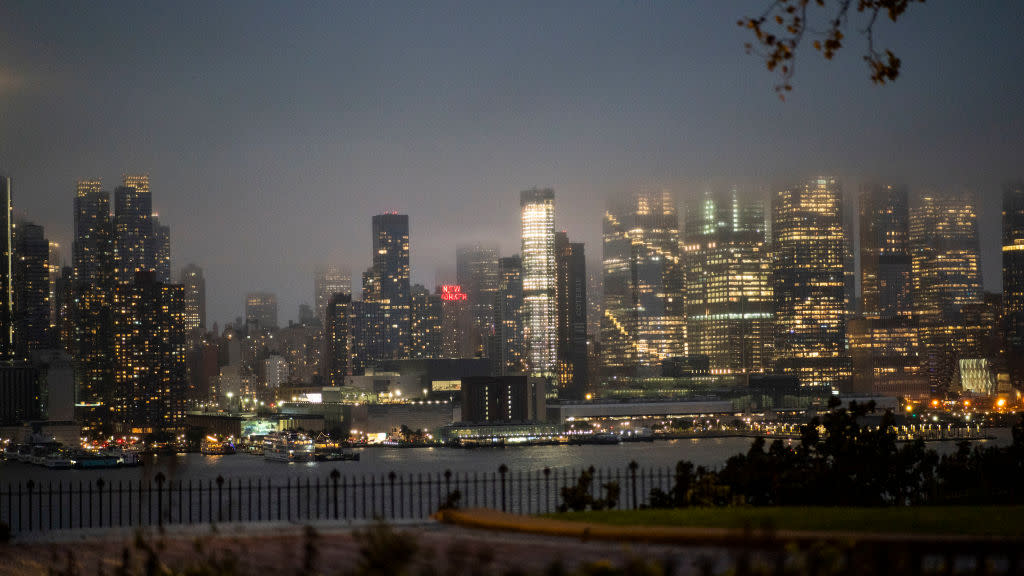Here's Where NYC Is Sinking

The New York skyline is covered with clouds during a coastal storm on September 29, 2023, as seen from Weehawken, New Jersey.
The ground beneath New York City is sinking and rising across different areas, new research shows. The sinking has contributed to worsening flood risks, including at sporting arenas, roadways, and a busy airport.
A study on the slight elevation changes throughout the city was published in the journal Science Advances last week. Researchers from NASA and Rutgers University documented the city rising and sinking at different rates from 2016 to 2023 by using a remote sensing technique called interferometric synthetic aperture radar (InSAR). This combines several 3D observations of a region to reveal changes over time.
Read more
Armed Biker Probably Regrets Messing With This Philly Woman's Car
Youtuber Jailed On Piracy Charges Has 57-Vehicle Collection Auctioned Off By Feds
“The city has long dealt with coastal flooding from both hurricanes and extratropical storms, but as seen with Superstorm Sandy in 2012, storm surges associated with severe weather events are becoming more destructive because of ongoing sea level rise,” the study authors wrote. “The relative rise in sea level during the 20th century resulted in an additional $8.1 billion in damages from Sandy than would have occurred a century prior.”
Residents have witnessed the consequences first hand. Despite billions of dollars of updates to LaGuardia Airport, that area has not been spared from damage due to extreme weather. Late last week, heavy rainfall over the NYC area created flash flooding in subway stations, across highways, and at the airport. Travelers had to wade through several inches of water in the terminals, NBC New York reported.
Researchers also found that some parts of New York are actually rising. They noted that Newton Creek in Brooklyn is rising at a rate of about 1.6 millimeters (0.06 inches) a year, while the neighborhood of Woodside, Queens rose about 6.9 millimeters (0.27 inches) between May 2016 to December 2019.
Want more climate and environment stories? Check out Earther’s guides to decarbonizing your home, divesting from fossil fuels, packing a disaster go bag, and overcoming climate dread. And don’t miss our coverage of the latest IPCC climate report, the future of carbon dioxide removal, and the invasive plants you should rip to shreds.
More from Gizmodo
Trump Lawyer Sports Gamer Laptop At $250 Million Fraud Trial
I Just Can't Get Past How Bad Door Handles Look On The New Z
Baldur’s Gate 3 Devs Give Sphynx Cat Fur, Immediately Apologize, Shave It Again
Sign up for Gizmodo's Newsletter. For the latest news, Facebook, Twitter and Instagram.

